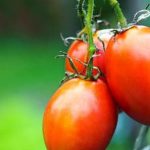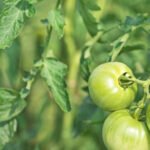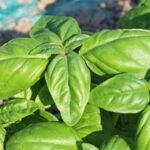Are you interested in starting a vegetable garden but don’t know where to begin? In this article, we will provide you with valuable gardening tips for vegetables to help you get started on your homegrown produce journey. From selecting the right vegetables for your garden to harvesting and storing fresh produce, we’ve got you covered with practical advice and creative recipe ideas.
When it comes to successful vegetable gardening, knowing the basics is essential. Whether you’re a seasoned gardener or a beginner, understanding the best practices for planting, watering, fertilizing, and managing pests and diseases can make a significant difference in your garden’s success. By following these tips, you can enjoy a bountiful harvest of homegrown vegetables throughout the growing season.
In addition to providing you with essential gardening tips for vegetables, we will also share strategies for extending the growing season and offer creative recipe ideas for using your homegrown produce. With our comprehensive guide, you’ll be equipped with the knowledge and inspiration needed to cultivate a thriving vegetable garden right in your own backyard.
Selecting the Right Vegetables for Your Garden
When it comes to vegetable gardening, one of the most important steps is selecting the right vegetables for your garden. Knowing which vegetables are best suited for your climate and growing conditions can make a big difference in the success of your garden.
Before choosing which vegetables to plant, it’s essential to consider factors such as your local climate, the amount of sunlight your garden receives, and the type of soil you have. Some vegetables thrive in cooler temperatures, while others require full sun to grow properly. Consider these factors when choosing which vegetables to include in your garden.
For beginners, it’s best to start with easy-to-grow vegetables such as tomatoes, lettuce, cucumbers, and bell peppers. These plants are relatively low-maintenance and can be grown in a variety of climates. As you gain more experience with gardening, you can experiment with more challenging crops such as broccoli, cauliflower, and Brussels sprouts.
In addition to considering the climate and growing conditions, think about what vegetables you and your family enjoy eating. There’s no point in planting an abundance of zucchini if no one in your household likes it. Focus on growing vegetables that you love to eat and that will provide a bountiful harvest throughout the growing season.
| Vegetable Name | Best Growing Conditions |
|---|---|
| Tomatoes | Full sun; well-drained soil |
| Lettuce | Partial shade; fertile soil |
| Cucumbers | Full sun; ample moisture |
| Bell Peppers | Full sun; warm temperatures |
Preparing the Soil for Planting
When it comes to successful vegetable gardening, one of the most crucial steps is preparing the soil for planting. This lays the foundation for healthy and productive plants throughout the growing season. By taking the time to properly prepare your soil, you can ensure that your vegetables have access to the essential nutrients and water they need to thrive.
Soil Testing
Before getting started with any soil preparation, it’s important to conduct a soil test to determine its pH level and nutrient content. This will help you understand what amendments may be needed to optimize the soil for vegetable growth. Most local agricultural extension services offer affordable soil testing kits or services.
Improving Soil Structure
Once you have the results of your soil test, you can begin improving the structure of the soil by adding organic matter such as compost, aged manure, or shredded leaves. Working this organic matter into the soil will help improve drainage, aeration, and overall fertility.
Soil Tillage
After incorporating organic matter, it’s time to till the soil to ensure that it is adequately loosened and aerated. Avoid tilling when the soil is too wet, as this can lead to compaction. Instead, wait until it has dried out enough so that it crumbles easily in your hand. This will create a suitable environment for deep root growth and water infiltration.
By following these essential steps for preparing your garden’s soil for planting vegetables, you can set your plants up for success from the very beginning. Taking care during this stage of gardening will pay off in healthier plants and a bountiful harvest later on.
Best Practices for Planting Vegetables
When it comes to planting vegetables, there are several best practices to keep in mind to ensure a successful and abundant harvest. One key tip is to pay attention to the spacing between plants. Proper spacing allows for good air circulation, which can help prevent diseases and promote healthy growth. Additionally, it’s important to consider the particular needs of each vegetable variety in terms of sunlight, soil type, and water requirements.
Another best practice for planting vegetables is to understand the concept of companion planting. Certain plant combinations can provide mutual benefits, such as deterring pests or improving flavor. For example, planting basil near tomatoes can improve the flavor of the tomatoes and repel pests that might damage them.
One more important tip for successful vegetable planting is to pay attention to the depth at which each type of vegetable seed or transplant should be planted. Follow seed packet instructions or consult a reliable gardening resource for specific guidance on how deep to sow each type of vegetable. Planting at the correct depth can impact germination rates and overall plant health.
| Vegetable | Spacing (Inches) |
|---|---|
| Tomatoes | 24-36 |
| Carrots | 2-3 |
| Lettuce | 6-18 |
Watering and Fertilizing Tips
Watering Techniques
When it comes to watering your vegetable garden, it’s important to find the right balance. Overwatering can lead to root rot and other issues, while underwatering can cause plants to become stressed and produce lower yields. A good rule of thumb is to water deeply and less frequently, allowing the soil to dry out slightly between waterings.
This encourages plants to develop deeper, stronger root systems. It’s also best to water in the morning to reduce evaporation and minimize the risk of fungal diseases.
Fertilizing Guidelines
Providing your vegetable plants with the proper nutrients is essential for healthy growth and a bountiful harvest. Before planting, it’s a good idea to amend the soil with organic matter, such as compost or well-rotted manure, to provide a slow release of nutrients over time.
Once your vegetables are growing, you can supplement with additional fertilizers as needed. Be sure to follow package instructions for application rates and frequency, and consider using a balanced fertilizer with equal parts nitrogen, phosphorus, and potassium for overall plant health.
Organic Fertilization Methods
For those interested in organic gardening practices, there are several natural fertilization methods that can be effective for vegetable gardens. Compost tea is an excellent way to add beneficial microorganisms and nutrients to the soil without harsh chemicals. Additionally, organic mulches such as straw or shredded leaves can help conserve moisture and slowly break down to provide nutrients over time.
Another eco-friendly option is using fish emulsion or seaweed extract as natural liquid fertilizers. These options not only nourish your plants but also improve soil health in the long run.
Pest and Disease Management for Vegetable Gardens
When it comes to maintaining a healthy vegetable garden, managing pests and diseases is essential. Here are some important tips to help you keep your plants thriving:
1. Identifying Common Pests and Diseases: Familiarize yourself with the most common pests and diseases that can affect your vegetable garden. This may include aphids, caterpillars, fungal infections, and more. By recognizing the signs of infestation or disease early on, you can take action swiftly.
2. Natural Pest Control Methods: Consider using natural pest control methods to manage unwanted visitors in your garden. Introducing beneficial insects like ladybugs or lacewings can help control aphid populations, while using neem oil can deter pests and prevent fungal infections. Additionally, practicing crop rotation can help reduce the risk of disease by disrupting the life cycles of potential pathogens.
3. Regular Inspections: Make it a habit to inspect your vegetable plants regularly for any signs of pest damage or disease. Look for holes in leaves, discoloration, wilting, or unusual growth patterns. Catching issues early on can prevent them from spreading to the rest of your garden.
By implementing these pest and disease management practices in your vegetable garden, you can promote healthy growth and abundant harvests of fresh homegrown vegetables for all your favorite recipes. Remember to stay proactive and attentive when it comes to caring for your plants.
Harvesting and Storage Techniques for Fresh Vegetables
After all the hard work of planting and nurturing your vegetable garden, it’s time to reap the rewards by harvesting your fresh produce. Proper harvesting techniques can make a huge difference in the flavor and quality of your vegetables. Different vegetables have different optimal harvesting times, so it’s important to familiarize yourself with the specific requirements of each type of vegetable in your garden.
When harvesting leafy greens like lettuce and spinach, it’s best to do so in the morning when the leaves are crisp and full of moisture. For root vegetables such as carrots and potatoes, gently loosen the soil around the plant before pulling them out to avoid damaging the roots. Tomatoes should be harvested when they are fully colored and slightly soft to the touch. Be sure to use sharp scissors or pruners to avoid damaging the plant when harvesting.
Once you’ve harvested your vegetables, proper storage techniques are essential for maintaining their freshness and flavor. Some vegetables, like onions and garlic, should be cured in a warm, dry place for several weeks before storage. Others, such as peppers and cucumbers, can be stored in the refrigerator for short-term use.
Additionally, certain vegetables like carrots and beets can be stored in a cool, dark place for extended periods. By following these guidelines for harvesting and storage, you can enjoy the fruits of your labor well beyond harvest season.
Tips for Extending the Growing Season
Extending your growing season can help you enjoy an abundant harvest for a longer period of time. Below are some helpful tips for extending the growing season in your vegetable garden:
- Use row covers: Row covers are lightweight, breathable fabrics that can be laid directly on top of your plants to protect them from the cold. They trap heat and create a mini greenhouse effect, allowing you to plant earlier in spring and continue growing later into fall.
- Invest in a cold frame: A cold frame is like a miniature greenhouse that can be used to extend the growing season by providing a warm, sheltered environment for your plants. It’s especially useful for starting seedlings early or protecting tender crops from frost.
- Plant cool-weather crops: Certain vegetables, such as lettuce, spinach, kale, and radishes, thrive in cooler temperatures. By planting these crops in late summer or early fall, you can continue harvesting fresh produce well into the colder months.
By implementing these strategies, you can prolong the growing season in your vegetable garden and continue enjoying fresh homegrown produce even as the weather starts to cool down.
Creative Recipe Ideas for Using Homegrown Vegetables
In conclusion, growing your own vegetables can be a rewarding and fulfilling experience. By following the right gardening tips, vegetables can thrive in your garden, providing you with an abundant supply of fresh produce throughout the growing season. From selecting the right vegetables to harvesting and storage techniques, there are several key factors to consider when embarking on your vegetable gardening journey.
One of the most satisfying aspects of growing your own vegetables is being able to create delicious meals using your homegrown produce. Whether it’s a simple salad with freshly picked lettuce and tomatoes or a hearty stew made with carrots and potatoes from your garden, the possibilities are endless. With a bit of creativity and some inspiration, you can turn your homegrown vegetables into mouthwatering dishes that will delight your taste buds.
Furthermore, by experimenting with different recipes and cooking methods, you can truly make the most of your homegrown vegetables. From pickling and preserving to creating flavorful sauces and spreads, there are countless ways to make use of your harvest.
By exploring creative recipe ideas for using homegrown vegetables, you can take full advantage of the fruits of your labor and enjoy delicious, farm-to-table meals all year round. So remember to get out in your garden this season and put these vegetable gardening tips into practice; not only will it benefit you physically but mentally as well.
Frequently Asked Questions
How Do You Grow a Perfect Vegetable Garden?
Growing a perfect vegetable garden requires careful planning, the right soil, sufficient sunlight, and regular watering. It’s important to choose the right vegetables for your climate and to properly space and care for them to ensure healthy growth and an abundant harvest.
What Are 5 Things You Should Do to Prepare a Good Veggie Garden?
To prepare a good veggie garden, you should start by testing your soil to determine its pH levels and nutrient content. Next, you’ll want to clear the area of any debris or weeds and create raised beds if necessary.
Adding organic matter to the soil, planting at the right time, and using proper mulching techniques are also essential steps in preparing a successful vegetable garden.
What Is a Good Layout for a Vegetable Garden?
A good layout for a vegetable garden often includes planting in rows or raised beds to allow for easy access and maintenance. It’s important to consider the mature size of each plant when spacing them out, as well as their sun exposure needs.
Grouping together vegetables with similar water and nutrient requirements can also help maximize growth and yield in a well-structured garden.

If you’re looking to get into vegetable gardening, or are just looking for some tips on how to make your current garden better, then you’ve come to the right place! My name is Ethel and I have been gardening for years. In this blog, I’m going to share with you some of my best tips on how to create a successful vegetable garden.





